3.7% Unemployment Rate, Lowest Since 1969 - Positive For Housing
The September Jobs Report in 9 Charts
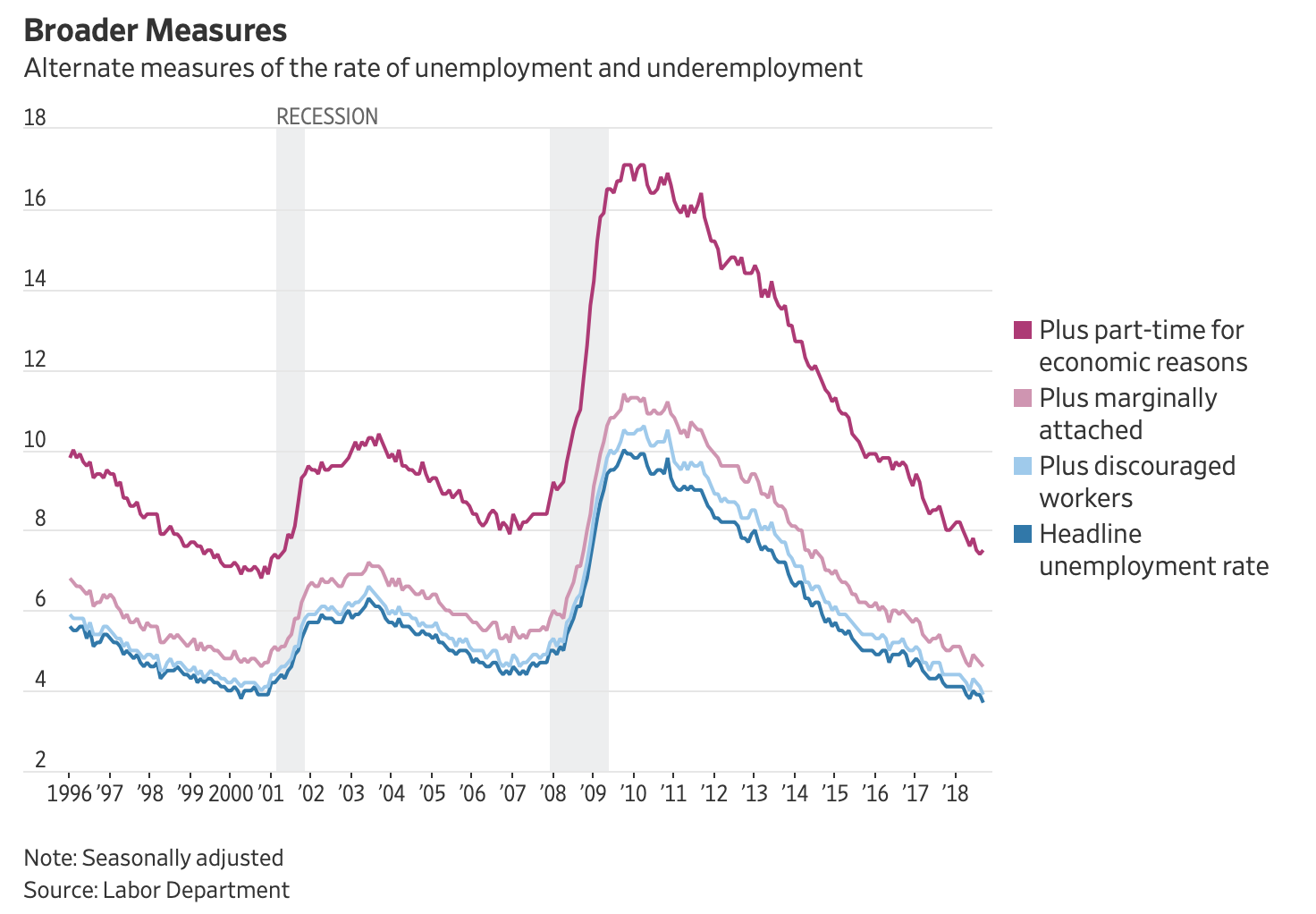
The share of the population that is in the labor force—defined as those working or actively searching for work—has hovered a bit below 63% this year. The rate has seen little sustained improvement or deterioration for the past five years. The share of the population that works was little changed last month, but has trended upward in recent years.
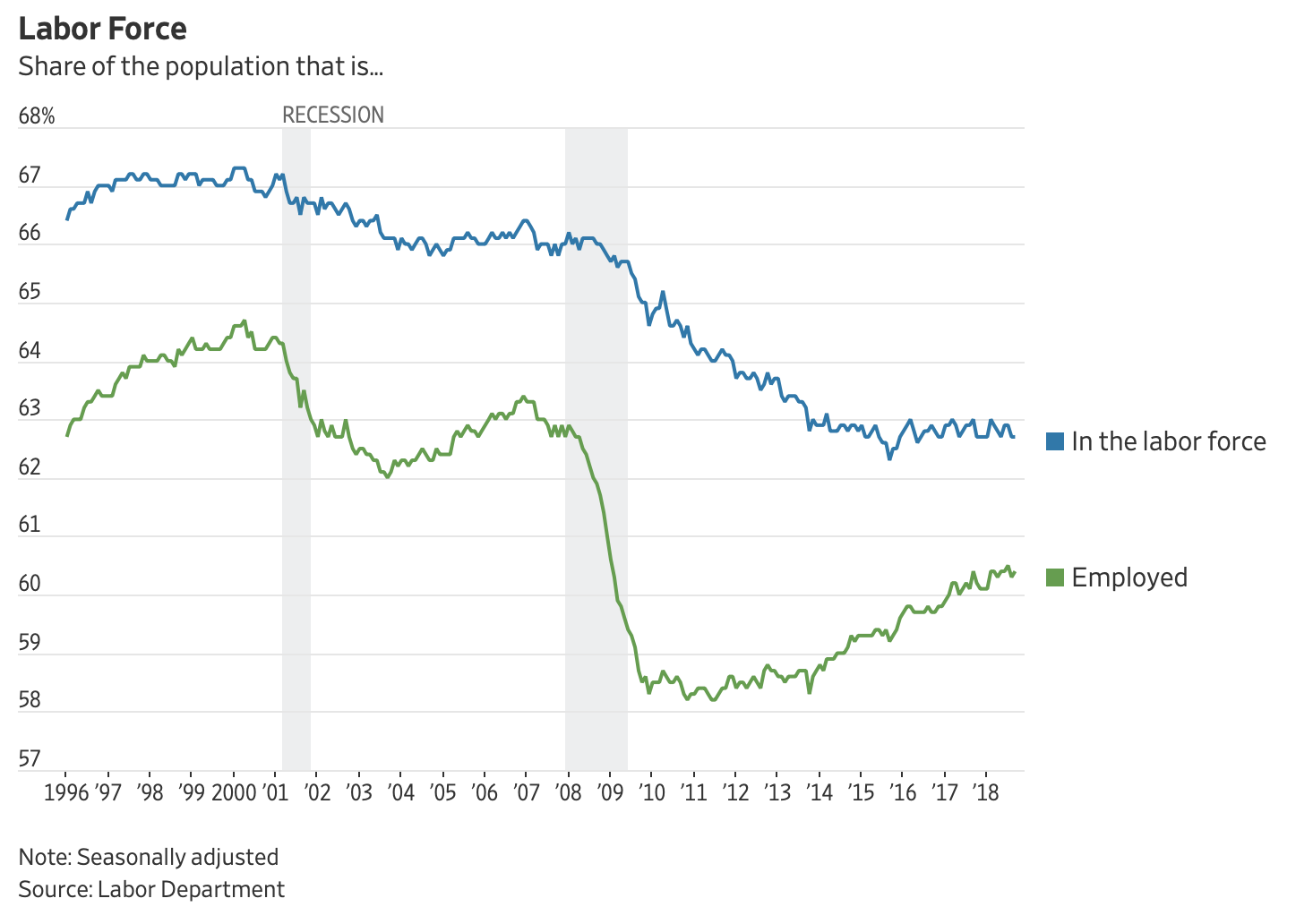
Participation rates are much higher for workers ages 25 to 54, where people are less likely to be out of the labor force due to retirement or education. The labor-force participation rate and employment-population ratio have both declined slightly in recent months.

The median spell of unemployment now lasts about nine weeks. This is much improved from the years right after the recession, but is still a few weeks longer than was typical during the strong labor markets of the late 1990s. Although job loss is now relatively rare, when it happens it can linger a bit longer than usual.
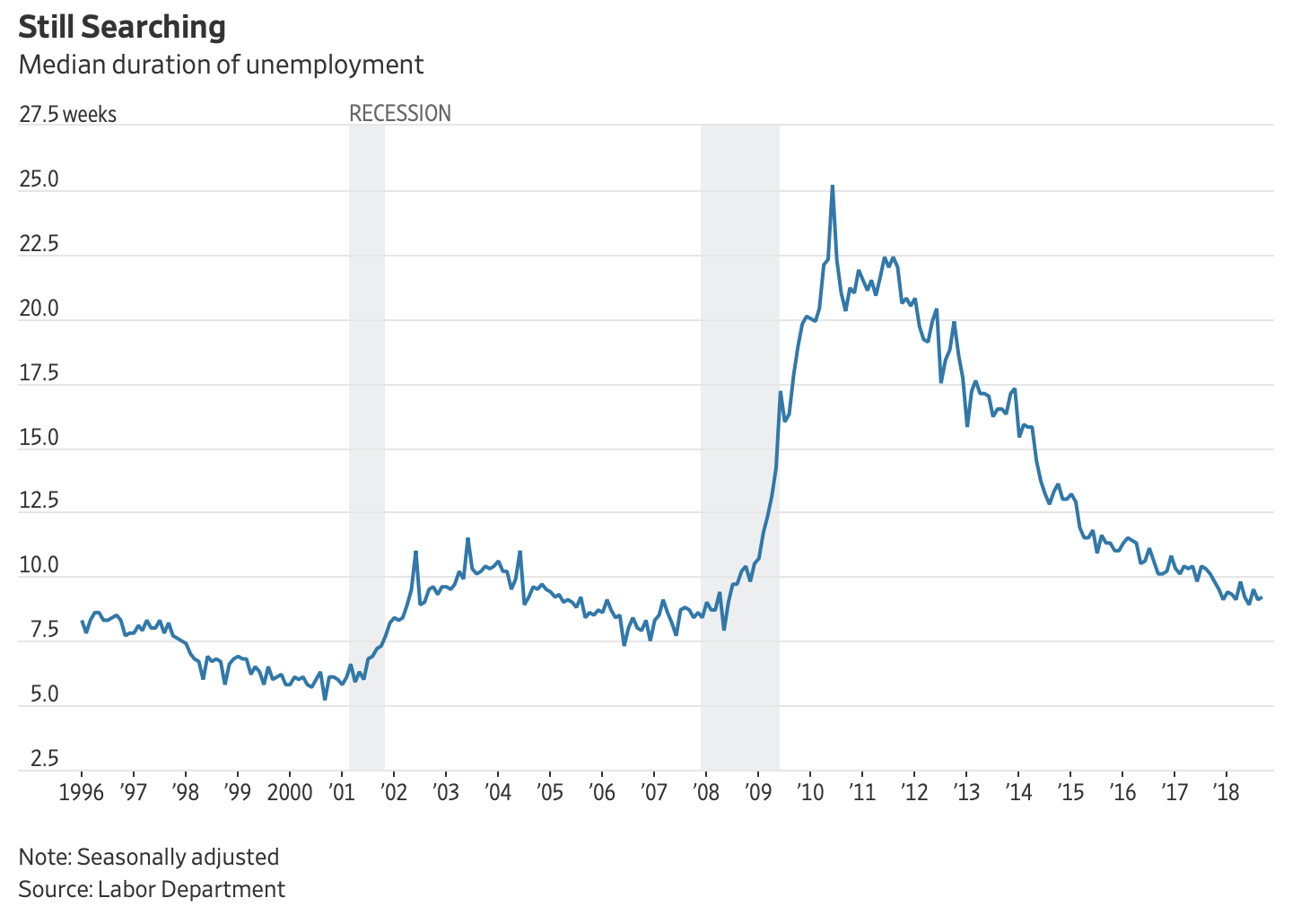
Even as the economy has improved, workers with different education levels face much different rates of unemployment. Those without a high-school degree have 5.5% unemployment while college graduates have an unemployment rate of just 2%.

Unemployment rates have trended down for workers of all races and genders in recent years. The unemployment rates for white women, black men and Hispanic women are all at the lowest in at least several decades.
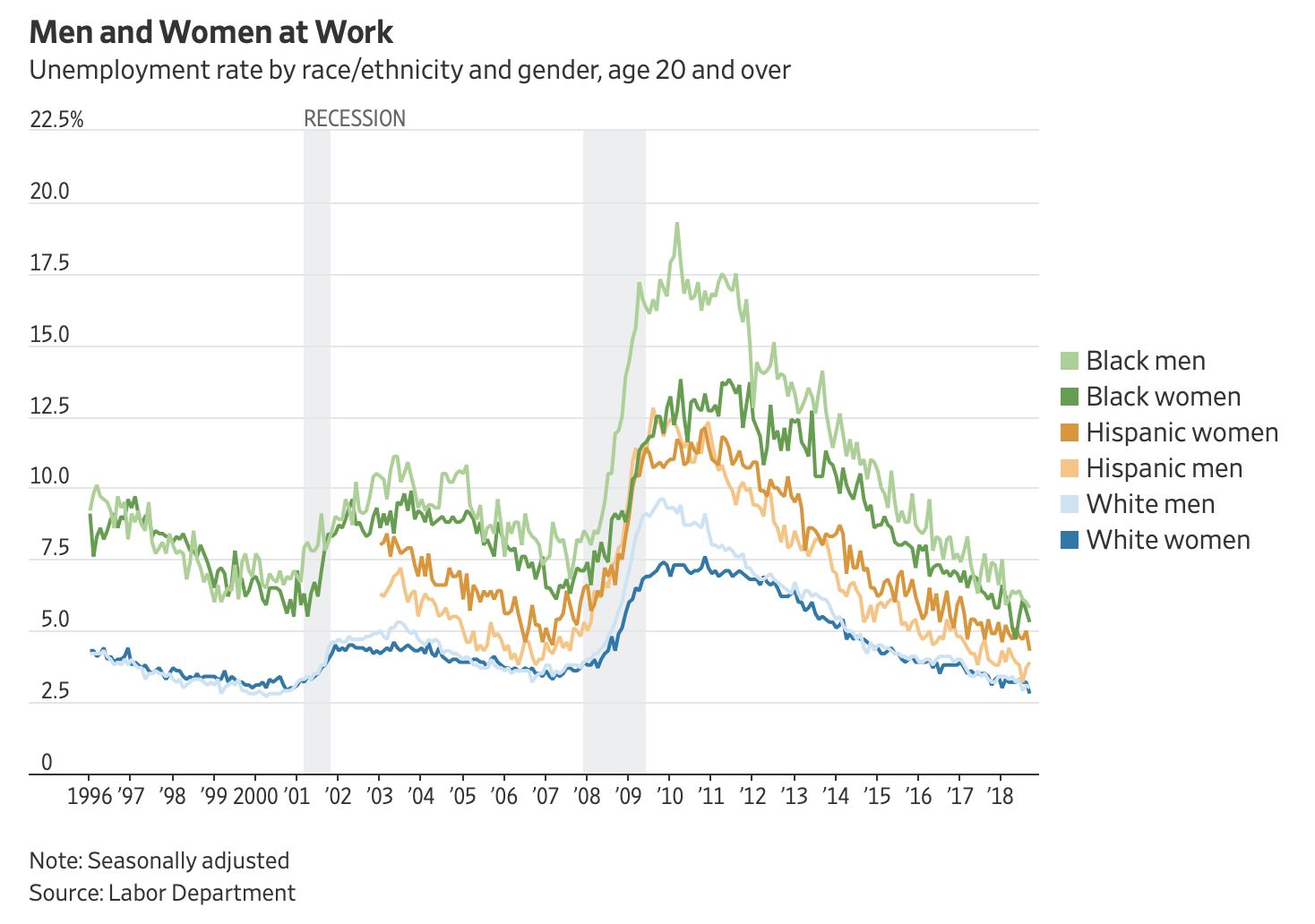
With nine months down, 2018 is shaping up to be one of the stronger years of job growth since the recession.
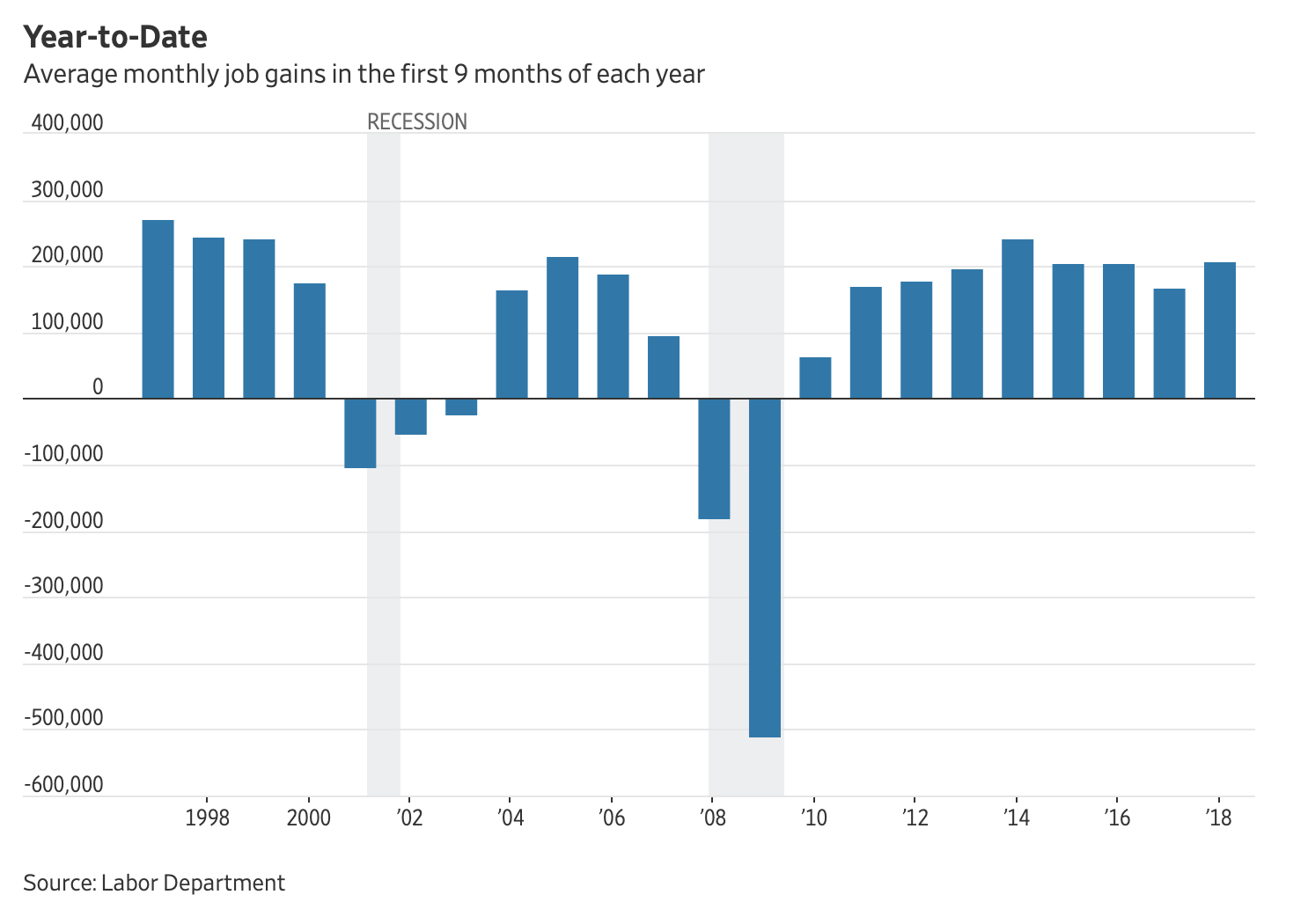
Related Article:








